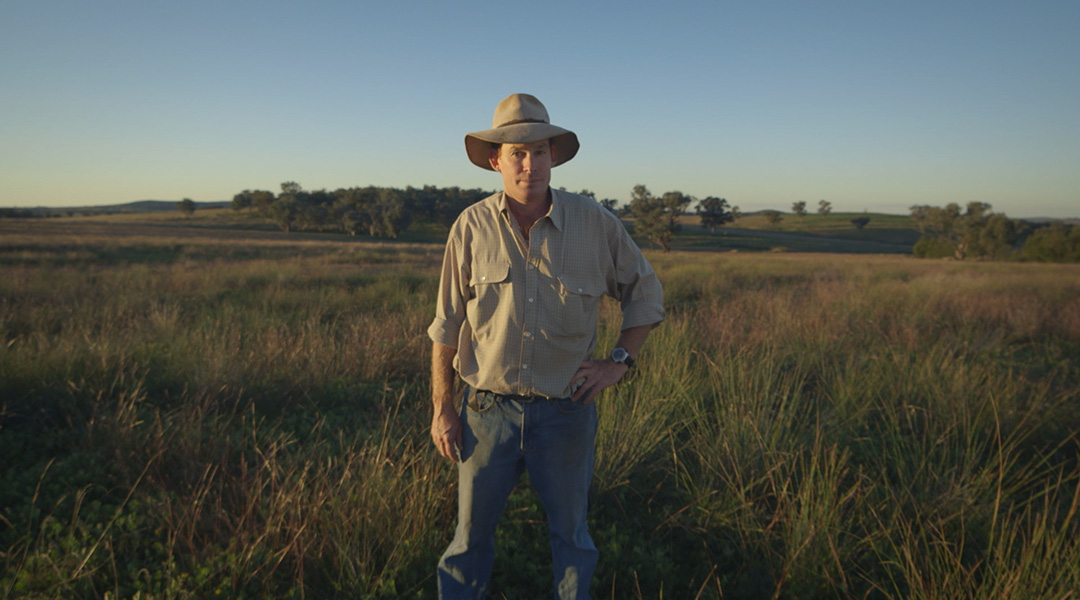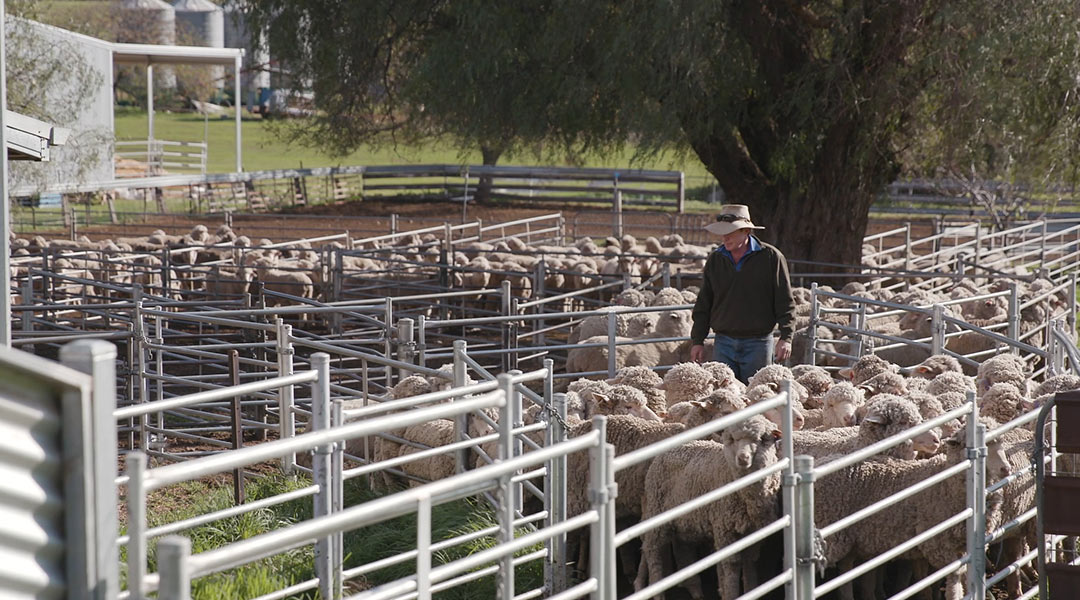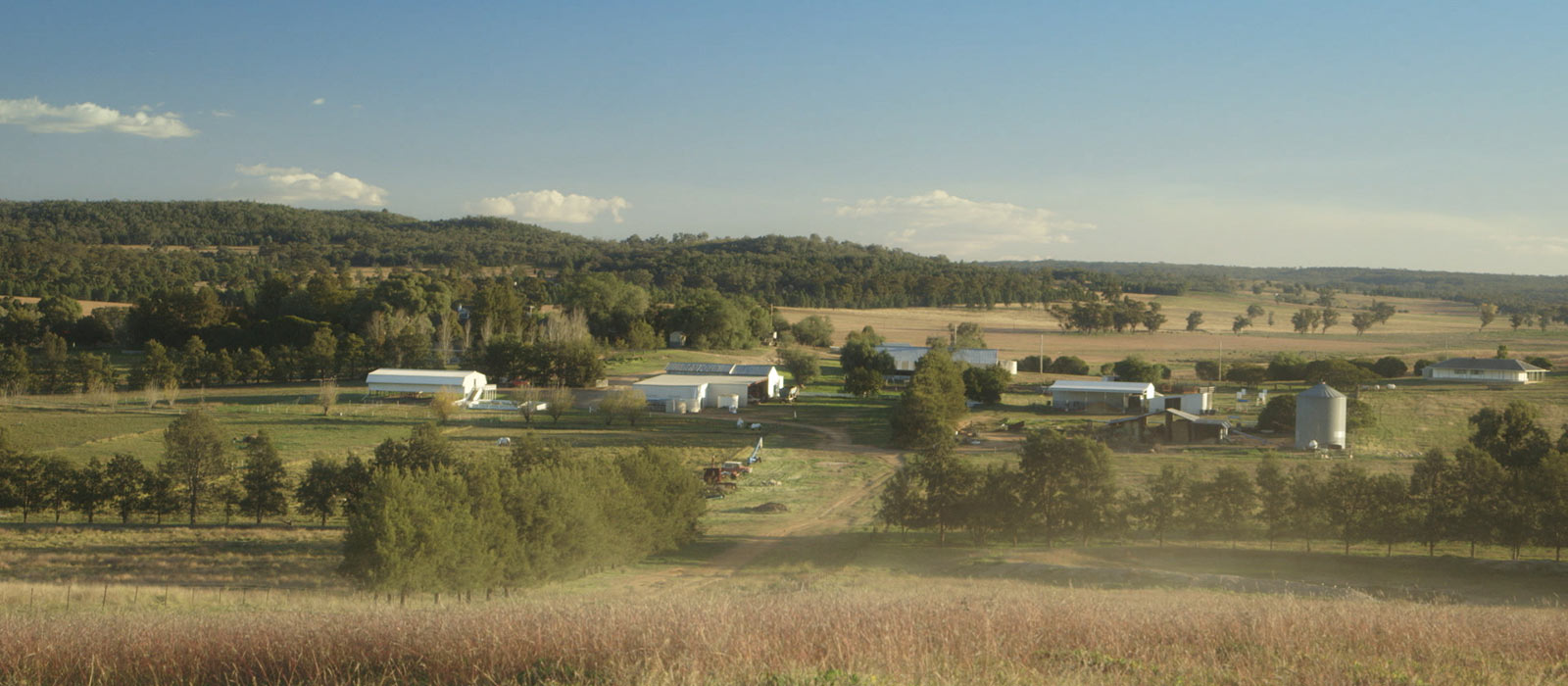In the quest to produce the highest quality Merino fleece in Australia, fifth generation woolgrower Matthew Coddington and his wife Cherie take a scientific approach to breeding. Which is not to say they meddle with nature… rather, they bring out its very best.
Natural history
When Matthew's grandfather George bought a sheep farm in 1928, he was continuing a tradition carried on from his father and his father's father. George spent decades sourcing the finest Merino rams to increase the quality and quantity of the wool cut from his flock, but he couldn't have possibly imagined the improvements his grandson would make through smart breeding.
Australian woolgrower Matthew Coddington from ‘Roseville Park’ produces some of the world’s finest Merino wool.
“My family moved out here from England in 1880,” Matthew says. “Prior to that, they'd been farming for 500 years and every generation it's been harder and harder to move ahead financially. In the 1950s a bale of wool could buy a brand-new motor car. Now you have to sell 30 bales of wool to buy a motor car.”

Breeding bigger sheep that produce more, higher quality wool is one way to counter this challenge, calling on science in a way that improves the natural order.
“As a farmer, there are two things we do. We harvest sunlight and water and we turn that sunlight and water into grass," Matthew says. "That's all wool needs to grow. Grass. It's just natural.”
 Happy healthy sheep produce the world’s best Merino wool.
Happy healthy sheep produce the world’s best Merino wool.
Top of the flocks
From their property near Dubbo in NSW, Australia, where they live with their five children, the Coddingtons strive to combine the natural elements with the genes of the finest rams to produce superior Merino wool.
“It's hard getting to the top," Matthew says. "It's even harder staying there, to keep it moving forward so that our genetics are at the elite end of the industry.”

“It's like we're training for the Olympics every year,” Cherie adds. "We're always aiming for the gold medal.”
Reaching the top of the podium isn't the only goal. Creating healthier, happier Merino sheep that are more resistant to disease brings benefits all round.
“They actually produce more,” Matthew explains. “They cut more wool, they grow into bigger bodied sheep and they produce more lambs so it's a win-win.”
What would grandfather George make of it all if he could see the Coddington's Merino flock today?“
I think he'd be blown away,” Matthew says. “They've doubled in size. The wool quality has also doubled in quality.”